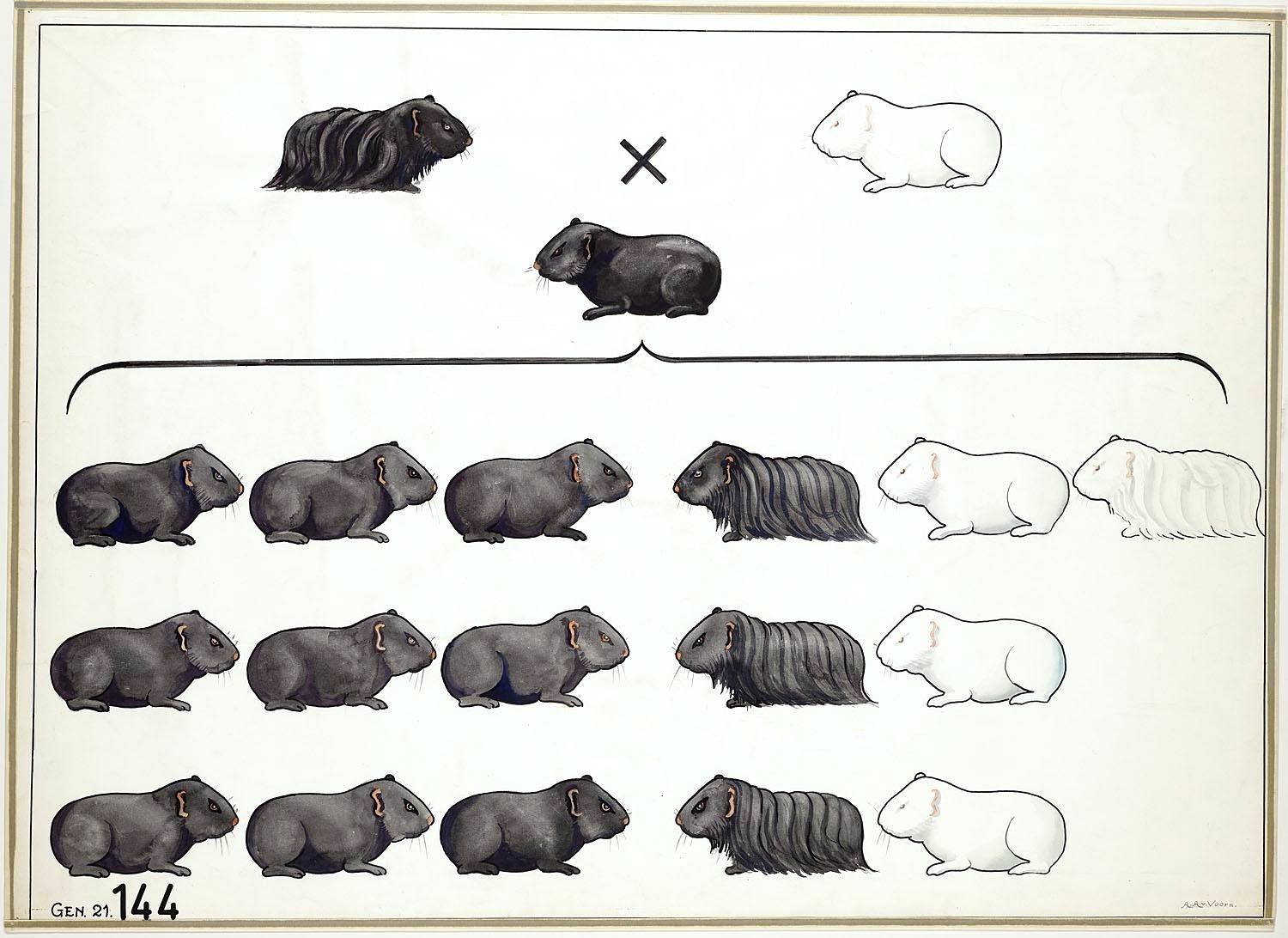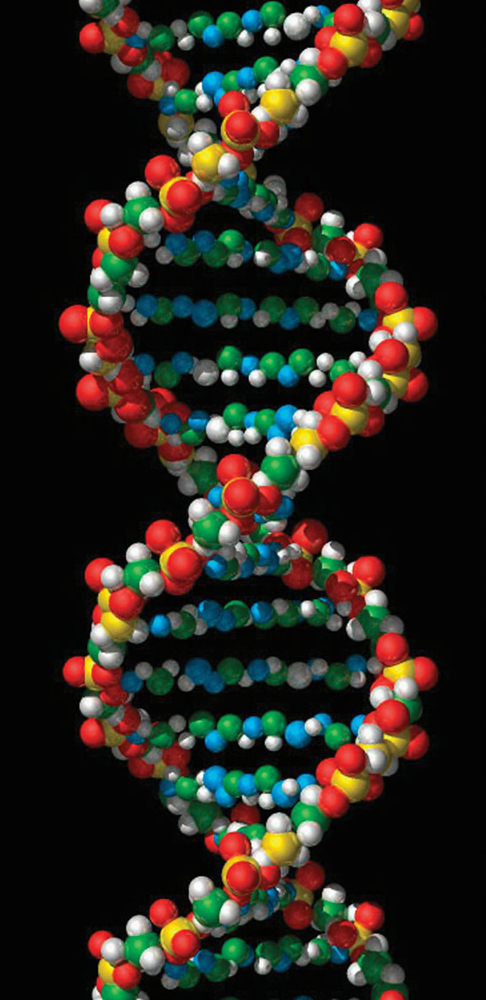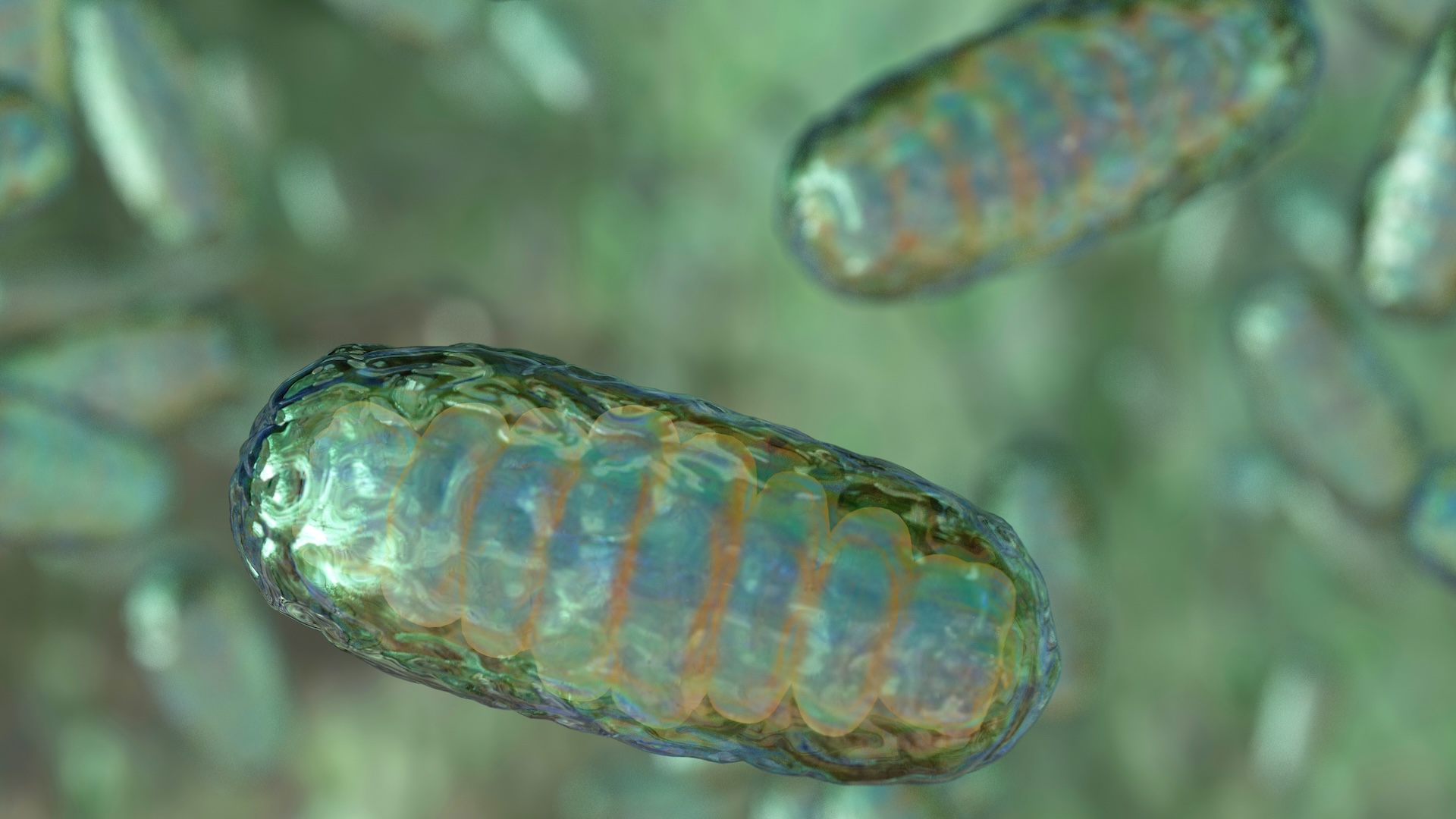Genetics: The Study of Heredity

Genetics is the study of how heritable traits are transmitted from parents to offspring. Humans have long observed that traits tend to be similar in families. It wasn’t until the mid-nineteenth century that larger implications of genetic inheritance began to be studied scientifically.
Natural selection

In 1858, Charles Darwin and Alfred Russell Wallace jointly announced their theory of natural selection. According to Darwin’s observations, in nearly all populations individuals tend to produce far more offspring than are needed to replace the parents. If every individual born were to live and reproduce still more offspring, the population would collapse. Overpopulation leads to competition for resources.
Darwin observed that it is very rare for any two individuals to be exactly alike. He reasoned that these natural variations among individuals lead to natural selection. Individuals born with variations that confer an advantage in obtaining resources or mates have greater chances of reproducing offspring who would inherit the favorable variations. Individuals with different variations might be less likely to reproduce.
Darwin was convinced that natural selection explained how natural variations could lead to new traits in a population, or even new species. While he had observed the variations existent in every population, he was unable to explain how those variations came about. Darwin was unaware of the work being done by a quiet monk named Gregor Mendel.
Inheritance of traits
In 1866, Gregor Mendel published the results of years of experimentation in breeding pea plants. He showed that both parents must pass discrete physical factors which transmit information about their traits to their offspring at conception. An individual inherits one such unit for a trait from each parent. Mendel's principle of dominance explained that most traits are not a blend of the father’s traits and those of the mother as was commonly thought. Instead, when an offspring inherits a factor for opposing forms of the same trait, the dominant form of that trait will be apparent in that individual. The factor for the recessive trait, while not apparent, is still part of the individual’s genetic makeup and may be passed to offspring.
Mendel’s experiments demonstrated that when sex cells are formed, the factors for each trait that an individual inherits from its parents are separated into different sex cells. When the sex cells unite at conception the resulting offspring will have at least two factors (alleles) for each trait. One inherited factor from the mother and one from the father. Mendel used the laws of probability to demonstrate that when the sex cells are formed, it is a matter of chance as to which factor for a given trait is incorporated into a particular sperm or egg.
We now know that simple dominance does not explain all traits. In cases of co-dominance, both forms of the trait are equally expressed. Incomplete dominance results in a blending of traits. In cases of multiple alleles, there are more than just two possible ways a given gene can be expressed. We also now know that most expressed traits, such as the many variations in human skin color, are influenced by many genes all acting on the same apparent trait. In addition, each gene that acts on the trait may have multiple alleles. Environmental factors can also interact with genetic information to supply even more variation. Thus sexual reproduction is the biggest contributor to genetic variation among individuals of a species.
Twentieth-century scientists came to understand that combining the ideas of genetics and natural selection could lead to enormous strides in understanding the variety of organisms that inhabit our earth.
Mutation

Scientists realized that the molecular makeup of genes must include a way for genetic information to be copied efficiently. Each cell of a living organism requires instructions on how and when to build the proteins that are the basic building blocks of body structures and the “workhorses” responsible for every chemical reaction necessary for life. In 1958, when James Watson and Francis Crick described the structure of the DNA molecule, this chemical structure explained how cells use the information from the DNA stored in the cell’s nucleus to build proteins. Each time cells divide to form new cells, this vast chemical library must be copied so that the daughter cells have the information required to function. Inevitably, each time the DNA is copied, there are minute changes. Most such changes are caught and repaired immediately. However, if the alteration is not repaired the change may result in an altered protein. Altered proteins may not function normally. Genetic disorders are conditions that result when malfunctioning proteins adversely affect the organism. [Gallery: Images of DNA Structures]
In very rare cases the altered protein may function better than the original or result in a trait that confers a survival advantage. Such beneficial mutations are one source of genetic variation.
Gene flow
Another source of genetic variation is gene flow, the introduction of new alleles to a population. Commonly, this is due to simple migration. New individuals of the same species enter a population. Environmental conditions in their previous home may have favored different forms of traits, for example, lighter colored fur. Alleles for these traits would be different from the alleles present in the host population. When the newcomers interbreed with the host population, they introduce new forms of the genes responsible for traits. Favorable alleles may spread through the population. [Countdown: Genetics by the Numbers — 10 Tantalizing Tales]
Genetic drift
Genetic drift is a change in allele frequency that is random rather than being driven by selection pressures. Remember from Mendel that alleles are sorted randomly into sex cells. It could just happen that both parents contribute the same allele for a given trait to all of their offspring. When the offspring reproduce they can only transmit the one form of the trait that they inherited from their parents. Genetic drift can cause large changes in a population in only a few generations especially if the population is very small. Genetic drift tends to reduce genetic variation in a population. In a population without genetic diversity there is a greater chance that environmental change may decimate the population or drive it to extinction.
— Mary Bagley, LiveScience Contributor
Further reading:
Get the world’s most fascinating discoveries delivered straight to your inbox.
